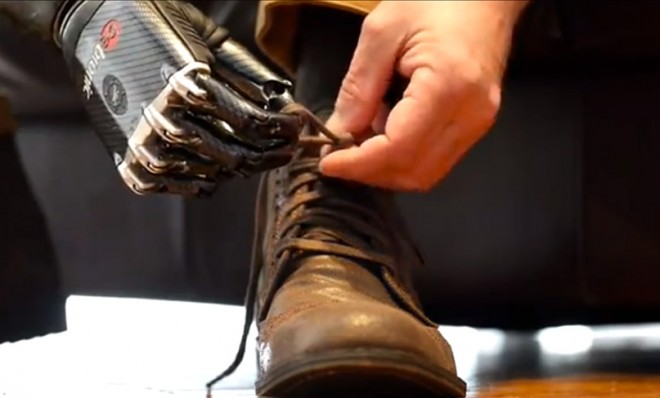The amazing bionic hand that can tie a shoe
A futuristic prosthetic that looks like something out of Terminator

In a previous life, Nigel Ackland worked as a precious metal smelter. Then one day, he had an accident...
It involved his right arm and an industrial blender.
After months battling nasty infections, he chose to have his forearm amputated. No hand. No fingers. Just a lifeless prosthetic a few months later, which was eventually supplanted by a slightly more functional hook not too dissimilar from what a pirate would wear.
The Week
Escape your echo chamber. Get the facts behind the news, plus analysis from multiple perspectives.

Sign up for The Week's Free Newsletters
From our morning news briefing to a weekly Good News Newsletter, get the best of The Week delivered directly to your inbox.
From our morning news briefing to a weekly Good News Newsletter, get the best of The Week delivered directly to your inbox.
That's what makes new technology like this so cool. In the video above, Ackland is wearing a bebionic3 prosthetic hand — a Terminator-like feat of engineering that lets him do basic things like tie his shoe. It works using something called myoelectric technology, which, according to Singularity Hub, "is controlled by signals sent to the user's arm to induce muscle twitches." As you can see, the bebionic3 provides Ackland with a much wider range of motion than other fake hands, allowing him to make coffee, shake hands with other people, and even write with a pen.
In the past few years, prosthetic technology has improved by leaps and bounds. DARPA, for instance, was seen in 2010 pioneering a new Modular Prosthetic Limb capable of feeling. According to Wired, the Pentagon is starting to hook artificial limbs up with real nerve endings, which will "allow the wearer to detect subtle sensations, respond to the brain's neural signals, move with unprecedented agility, and 'incorporat[e] the limb into the sense-of-self.'"
Then just last December, biomedical engineers were able to connect a robotic implant to the brain of Jan Sheuermann, a quadriplegic who lost the ability to move her arms and legs due to a neural disease. But with the help of a brain-computer interface, the 53-year-old was able to feed herself for the first time in years, using her force-of-will and a robotic arm.
Granted, Ackland's hand isn't nearly as nimble as the biological digits designed by Mother Nature — Luke Skywalker this is not — but it's not hard to see how such an innovation could make everyday living more manageable.
A free daily email with the biggest news stories of the day – and the best features from TheWeek.com
-
 How drones have detected a deadly threat to Arctic whales
How drones have detected a deadly threat to Arctic whalesUnder the radar Monitoring the sea in the air
-
 A running list of the US government figures Donald Trump has pardoned
A running list of the US government figures Donald Trump has pardonedin depth Clearing the slate for his favorite elected officials
-
 Ski town strikers fight rising cost of living
Ski town strikers fight rising cost of livingThe Explainer Telluride is the latest ski resort experiencing an instructor strike